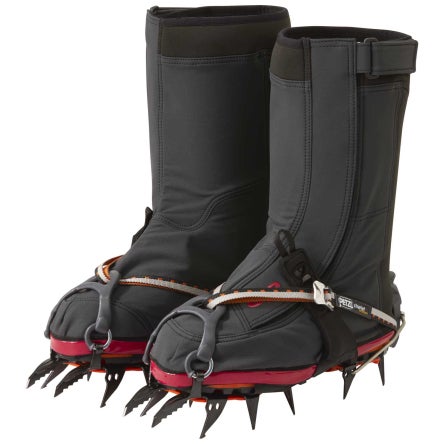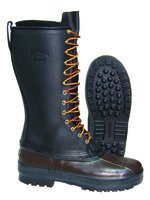Montana was a wake up call for me. Ive primarily hunted warmer, dryer climates and I’ve only hunted a couple of times in snow, and never like this year in Montana. We got dumped with a couple feet of snow and temps that were in the negatives at times. I had a combination of equipment and technique problems that kept my feet and particularly my toes aching with cold.
I’d like you guys to tell me how to improve my fundamentals for taking care of my feet in cold weather, and give me some upgrades to avoid this again in the future.
I went into the season with uninsulated Crispi Guides and my normal wool hiking socks and Kuiu gaiters. I also used toe warmers every day, and they did virtually nothing to heat my toes. For the most part, my feet were fine, but my toes ached so bad that it severely distracted me while I was glassing.
I did a fair amount of hiking for 15-20 minutes, then glassing for a few hours. When moving, my feet and toes were fine. Once I stopped, the problems started. In addition, we did a backcountry spike camp and the hike in made my feet sweat and my wool socks got damp, and that was all she wrote. My feet were cold the entire trip as the boots were damp from perspiration on the inside and it never got warm enough to dry them out. It did get warm enough to start melting snow, and combined with foot sweat, meant our boots were frozen solid the next morning.
As far as equipment goes, I can get insulated boots, heavy wool socks, liner socks, vapor barrier liners, down glassing booties, insulated over-boots (arctic shield), etc. I want to be able to glass without being distracted by my feet. What combination do you guys use?
For techniques, how do you manage perspiration in your footwear when it is cold (I don’t have a hot tent)? How do you take care of your boots to prevent them freezing overnight? What techniques do you have for keeping your feet as dry and warm as possible on longer hunts?
Sent from my iPhone using Tapatalk
I’d like you guys to tell me how to improve my fundamentals for taking care of my feet in cold weather, and give me some upgrades to avoid this again in the future.
I went into the season with uninsulated Crispi Guides and my normal wool hiking socks and Kuiu gaiters. I also used toe warmers every day, and they did virtually nothing to heat my toes. For the most part, my feet were fine, but my toes ached so bad that it severely distracted me while I was glassing.
I did a fair amount of hiking for 15-20 minutes, then glassing for a few hours. When moving, my feet and toes were fine. Once I stopped, the problems started. In addition, we did a backcountry spike camp and the hike in made my feet sweat and my wool socks got damp, and that was all she wrote. My feet were cold the entire trip as the boots were damp from perspiration on the inside and it never got warm enough to dry them out. It did get warm enough to start melting snow, and combined with foot sweat, meant our boots were frozen solid the next morning.
As far as equipment goes, I can get insulated boots, heavy wool socks, liner socks, vapor barrier liners, down glassing booties, insulated over-boots (arctic shield), etc. I want to be able to glass without being distracted by my feet. What combination do you guys use?
For techniques, how do you manage perspiration in your footwear when it is cold (I don’t have a hot tent)? How do you take care of your boots to prevent them freezing overnight? What techniques do you have for keeping your feet as dry and warm as possible on longer hunts?
Sent from my iPhone using Tapatalk



